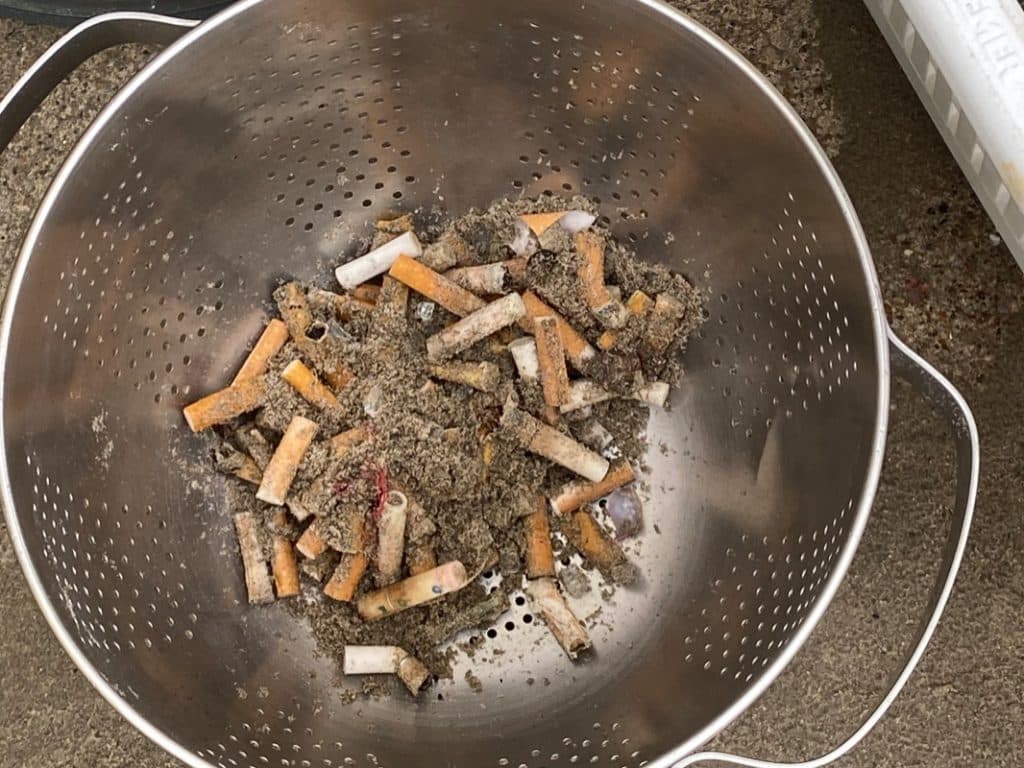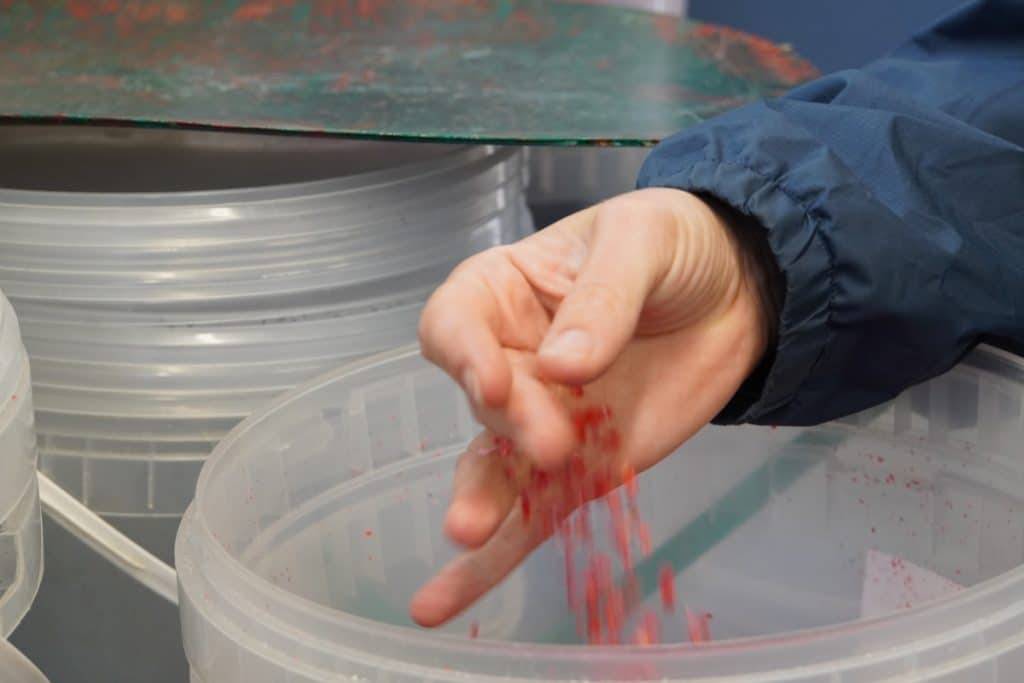Who hasn’t been there… you walk along the beach and discover not only stones and shells, but also cigarette butts, bottle caps and heaps of stuff that certainly has no place on a beach. Juttersgeluk wanted to change this and had a great idea.
Juttersgeluk in Zandvoort
A large yellow shipping container stands right on the beach, flags flutter in the wind and there is a lot of activity. I have arrived at the Juttersgeluk site in Zandvoort.

Juttersgeluk translates as “the luck of the beachcombers”. In the past, collecting on the beach provided families with free firewood, for example. Sometimes there were also finds washed up from sunken ships. Today, it is rare to find real treasure and even if you do find something valuable, you are obliged to take it to the police.
Here on the beach at Zandvoort, Juttersgeluk does not deliberately go treasure hunting, but collects completely different “loot”. Especially on windy days and when the tide is strong, the Zandvoort “beachcombers” can be spotted on the beach with their buckets.

Flotsam and jetsam workshop
It is quite windy when we meet the Juttersgeluk staff at the container in the morning. Over a coffee, we first learn what the sea washes up and what our task will be for the next hour.

We won’t be collecting shells or stones. Our task will be to pick up everything that doesn’t belong on the beach or in the sea. We will collect rubbish! If we’re lucky, we might even find something unusual that we didn’t expect. Some time ago, I was in a museum on Texel where the only finds on display were things that had been washed up on the beach. From bottles (sometimes with a message) to dummies or children’s toys, there were so many curious finds in this museum that you wouldn’t believe they were floating in the sea.
Let’s go!
Everyone gets their own bucket and a bin liner. There is also a cup in the bucket. Cigarette butts should be collected here separately.

It reminds me a little of the “rubbish duty” that we regularly had to do at school after the big break. There was always a class going round the playground collecting rubbish. So times come back… I become a litter picker…
Not even 10 metres further on, I didn’t actually need tongs, but a sieve. Small pieces of glass glittered everywhere in the sand. Just a few days earlier, a storm had destroyed some of the glass panes in the beach bars and there were still plenty of shards in the sand. I picked up as many as I could and they ended up in the bin.

Then we continued along the beach and I was admittedly more than surprised. Within about 30 minutes, a good 50 cigarette butts had landed in my cup. When you consider that a single cigarette butt contaminates between 40 and 60 litres of water, the carelessness of some smokers shocks me all the more. Yet picking up the cigarette butt could be so easy. There are numerous suppliers of collection tins that you can carry in every bag. There are even free collection points on the beach in Zandvoort where you can take small collection containers with you and return them.

But it wasn’t just cigarette butts. Bottle caps, the remains of plastic bags, fishing nets, paper, wire… all ended up in the bin. And I don’t want to know what I overlooked. In any case, I didn’t discover any “treasure”.

And what happens to the rubbish?
Back at the overseas container, everyone sorts the rubbish they have collected.
It’s very simple with the found cigarette butts. They all go into a large sieve. The sticky sand dries over the course of the day and then falls off. On “good” days, the sieve fills to the brim and at the end of the day the employees dispose of the cigarette waste properly.

The other items found are sorted – with expert help – into different collection containers. Some of the materials can be reused. Other materials go straight into the rubbish.
They are reused directly in the overseas container. Take, for example, the countless plastic bottle caps. After they have been sorted by colour and washed, they are put into a shredder. This produces a plastic granulate that is then heated. The soft granulate is pressed into large sheets. The “Juttersgeluker” then process these into key rings, soap dishes, …. If you wish, you can also buy these directly on site or in some hotels and shops in Zandvoort.

Of course, there is also the opportunity to create your own souvenir of your walk on the beach from the rubbish you have just found. In workshops, interested hobbyists are given simple tips for further processing. Perhaps a great suggestion is to use the rubbish you collect not only on the beach and on holiday, but also at home and then create individual pieces.

How can I help collect Juttersgeluk?
If you would like to take part directly in a paid workshop, you can do so at certain times. You should register online in advance.
The workshop lasts 2 hours and is of course accompanied by dedicated people who are happy to pass on their knowledge about the beach and rubbish along the way.
I particularly liked an offer that is aimed specifically at children. The Juttersgeluk team has designed a bingo game. Here, children can tick their finds on a playing card and get a playful impression of the topic of environmental pollution.

Perhaps the workshop is enough of an incentive to not only take a closer look at your own waste production, but also to pick up some rubbish every now and then when you go for a walk in future. Every piece of rubbish less improves the lives of countless living creatures.

I got to know Juttersgeluk during a press trip to Zandvoort .







Leave a Reply